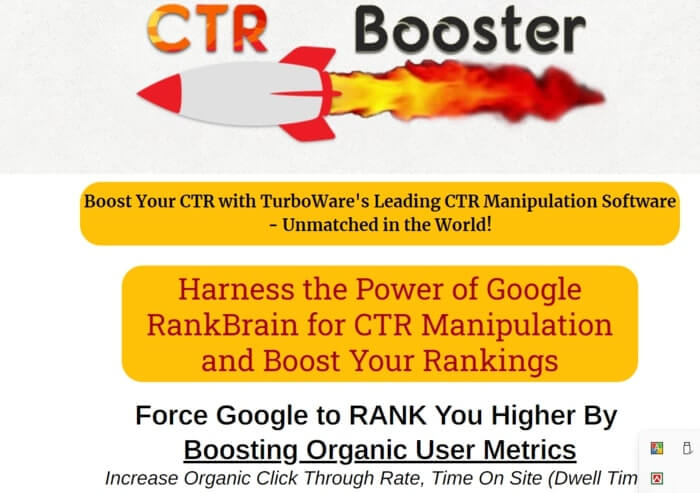Interaction Techniques: The Importance of CTR Control
In the realm of digital advertising and marketing, understanding and manipulating Click-Through Rate (CTR) offers as a foundation for efficient involvement techniques. As a vital statistics that mirrors exactly how well material resonates with its designated target market, CTR can be affected by numerous strategies, from the crafting of headings to the combination of visuals.
Comprehending Click-Through Rate
Although the idea of click-through rate (CTR) may appear uncomplicated, it plays a vital function in examining the efficiency of electronic advertising campaigns. CTR is defined as the proportion of individuals that click on a certain link to the variety of overall individuals that view the associated web content, normally revealed as a percentage. This metric acts as a crucial performance indication (KPI) for assessing the success of numerous on the internet advertising approaches, including e-mail advertising and marketing, social media advertisements, and internet search engine advertising.
A high CTR indicates that the web content resonates with the target market, triggering them to engage better with the material. Conversely, a low CTR may signal that the content fails to record passion or provide worth. Comprehending CTR is vital for marketing professionals as it guides the improvement of campaign approaches, including the optimization of advertisement copy, visuals, and phones call to action. Moreover, CTR can impact the general roi (ROI) of electronic campaigns, influencing budget plan allocation and resource monitoring. By carefully checking and evaluating CTR, marketing experts can make data-driven decisions that improve customer involvement and drive conversions.
Factors Influencing CTR
Several elements significantly influence click-through rate (CTR), shaping how properly material captures target market focus. One basic variable is the importance of the web content to the target market. When material aligns very closely with customers' passions and demands, it normally improves interaction and enhances CTR.
One more vital aspect is the high quality and clearness of the headline or subject line. Compelling headlines that evoke inquisitiveness or provide clear value propositions can entice customers to click. In addition, the aesthetic charm of content, including photos and formatting, plays an important function; well-designed visuals can stand out and encourage interaction.
When the audience is most energetic can lead to greater interaction rates,Timing likewise affects CTR; uploading material. Additionally, the placement of web links within content is substantial; tactically positioning calls-to-action can lead individuals toward clicking.
Last but not least, individual trust and trustworthiness influence CTR. Material from respectable resources or acquainted brands usually garners even more clicks, as individuals are more probable to involve with content they regard as trustworthy. By understanding and leveraging these variables, marketing professionals can enhance their material strategies and enhance CTR properly.
Techniques for CTR Adjustment
Reliable methods for click-through price (CTR) control can significantly enhance online engagement and drive website traffic. One of the most impactful approaches is maximizing titles and headlines.
One more method includes the calculated use of meta descriptions. A well-written meta description provides a succinct summary of the content while enticing users to click. LinkDaddy CTR Manipulation. Utilizing action-oriented language and clear worth propositions can improve CTR
Aesthetic components also play an important function. Incorporating attractive photos, infographics, or videos can bring in individuals' interest, making the content much more appealing. Additionally, A/B screening different visuals can yield insights into what reverberates most with the target market.
Lastly, leveraging social proof, such as user reviews or endorsements, can build trustworthiness and urge clicks. Presenting the appeal of material or highlighting endorsements promotes count on and entices customers to involve.
Measuring Engagement Effectively
Measuring involvement properly is critical for recognizing the effect of CTR control methods. Interaction metrics offer insights right into exactly how individuals connect with content, revealing the efficiency of numerous techniques used to boost click-through rates. Key performance indicators (KPIs) such as bounce price, time on page, and pages per session need to be checked closely. These metrics help assess whether the increase in CTR equates to significant individual involvement or simply shows superficial clicks.

In addition, division analysis can recognize which audience demographics are most engaged, making it possible for customized content distribution that reverberates with particular groups. Devices like Google Analytics or warm mapping software can visualize customer habits, highlighting locations of rate of interest or rubbing within the material.
Inevitably, a thorough technique that combines qualitative and measurable data is important for accurately measuring involvement. This complex examination will notify the continuous improvement of CTR manipulation approaches, guaranteeing placement with user assumptions and boosting overall performance.
Study and Success Stories

In the tech sector, Check This Out a software program business utilized A/B screening on their touchdown web pages, trying out with different headings and call-to-action buttons. The enhanced version caused an outstanding 60% surge in CTR, directly associating with an increase in test sign-ups and subsequent memberships.
In a similar way, a non-profit company revamped their contribution web page using psychological narration and click to read more compelling visuals. By purposefully manipulating their material and format, they accomplished a 35% greater CTR, converting to a substantial boost in contributions.
These situation studies highlight just how careful approaches bordering CTR control can enhance user involvement, inevitably driving conversion prices. By comprehending target market preferences and leveraging data analytics, organizations across various sectors can understand substantial enhancements in their interaction metrics, showcasing the extensive influence of thoughtful digital marketing methods.

Conclusion
In final thought, efficient engagement approaches are greatly reliant on the adjustment of Click-Through Price (CTR) as a vital metric for material success. By utilizing techniques such as maximized headlines, engaging visuals, and A/B screening, marketers can substantially enhance CTR and, consequently, target market interaction.
CTR is defined as the proportion of users that click on a particular web link to the number of overall users who see the associated web content, usually expressed as a portion.Several aspects considerably affect click-through rate (CTR), forming exactly how properly content captures target market attention. When material aligns closely with customers' requirements and interests, it naturally boosts involvement and boosts CTR.
By comprehending and leveraging these factors, marketers can improve their material from this source strategies and optimize CTR successfully.
In final thought, reliable engagement strategies are heavily reliant on the control of Click-Through Price (CTR) as a crucial metric for material success.